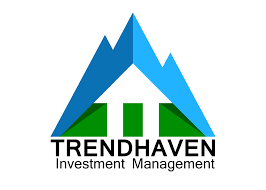
November 1, 2019
Like many other large wealth managers, Morgan Stanley is expecting lower forward returns for diversified buy and hold portfolios. They recently published their forecast of a 2.8% average annual return over the next 10 years for a 60/40 stock-bond portfolio. Moreover, they say investors will have to accept much higher volatility in eking out that meager return. The average annual return has been nearly 8.0% since 1881 and about 6% over the last 20 years, after double digit annual returns reaching as high as 16% from the early 1980s to the early 2000s. With today’s high valuations and extraordinarily low rates, the lowered expectations for future returns seems reasonable. Many leading market analysts have been anticipating a reversion to long term investment return averages, and they expect that an extended future period of subpar returns by historic standards is likely, balancing out the above-trend gains posted during the current decade-long bull market.
What seems to be missing is that a reversion-to-the-mean would also imply that sooner or later we are due for another major market correction that would take a portfolio into severe drawdown, recovery from which will not be shortened by a 5.5% reduction in the Fed Funds rate, like the last two times (2000 and 2008). That rate stands at 1.75%. Global central banks have far fewer bullets in their monetary guns to fight off the next downturn in asset prices and economic activity. For those in or approaching retirement, this introduces the specter of sequence of returns risk.
I have no idea when the next major market correction will occur. But when it does occur, retirees, pensions and endowments who have current spending needs to be serviced by investment assets face the prospect of having to liquidate assets while in drawdown. This is a permanent impairment of wealth. No one is talking about this elephant in the room.
To mitigate this risk, passive asset management and diversification should be replaced by active management. Not the kind of active management that fusses with individual positions within long-only asset classes and/or making adjustments to long-only asset class allocations, but the kind that can recognize and act upon a tradable price trend… the kind that takes a position on when to be in the market and when to be out. Unfortunately, this bolder brand of active management lies outside the mandates of institutions that sell financial products and the investment committees of pensions and endowments, except to the extent that the later may allocate to hedge funds.
Facing a shortfall, pensions may be able to cut back on benefit payments or raise capital. Public pensions may be able to get taxes to fill the gaps. Endowments can curtail spending and ramp up donation marketing programs. But individual investors trying to live off their retirement savings are most exposed. Retirees who have rolled over their 401(k) plans into IRAs or taken lump-sum pension distributions are depending on actualizing a total investment return that can meet their expenses. If interest and dividends remain anywhere near the current historical lows, then the balance has to come from selling assets. Not many have planned on selling at a loss in order to pay their bills. Not many have been advised that this is even a possibility.
Let’s assume that Morgan Stanley’s forecast for 2.8% average returns over the next ten years is prescient, and you make precisely that every year. If you begin retirement with a $2 million nest egg and draw out $125,000 per year to live on and pull out money to pay taxes at say 35%, you will end up with an ending account value of about $660,000 after ten years.
But, what if in year two you suffer a 40% decline in the value of your investment portfolio, and yet make higher than 2.8% annual returns later in order for Morgan Stanley’s 2.8% 10-year average return forecast to become true? You would run out of funds before the ten years are up. Oops! That’s sequence of returns risk.
No one really knows what future returns are going to be. But if most market prognosticators are predicting lower returns in the future along with greater volatility it just makes sense that you would seek out an investment strategy that strives for steady growth of investment value over time along with the mitigation of drawdown. This called absolute return investing. It mitigates sequence of returns risk and it makes a lot of sense for retirees, pensions and endowments.
